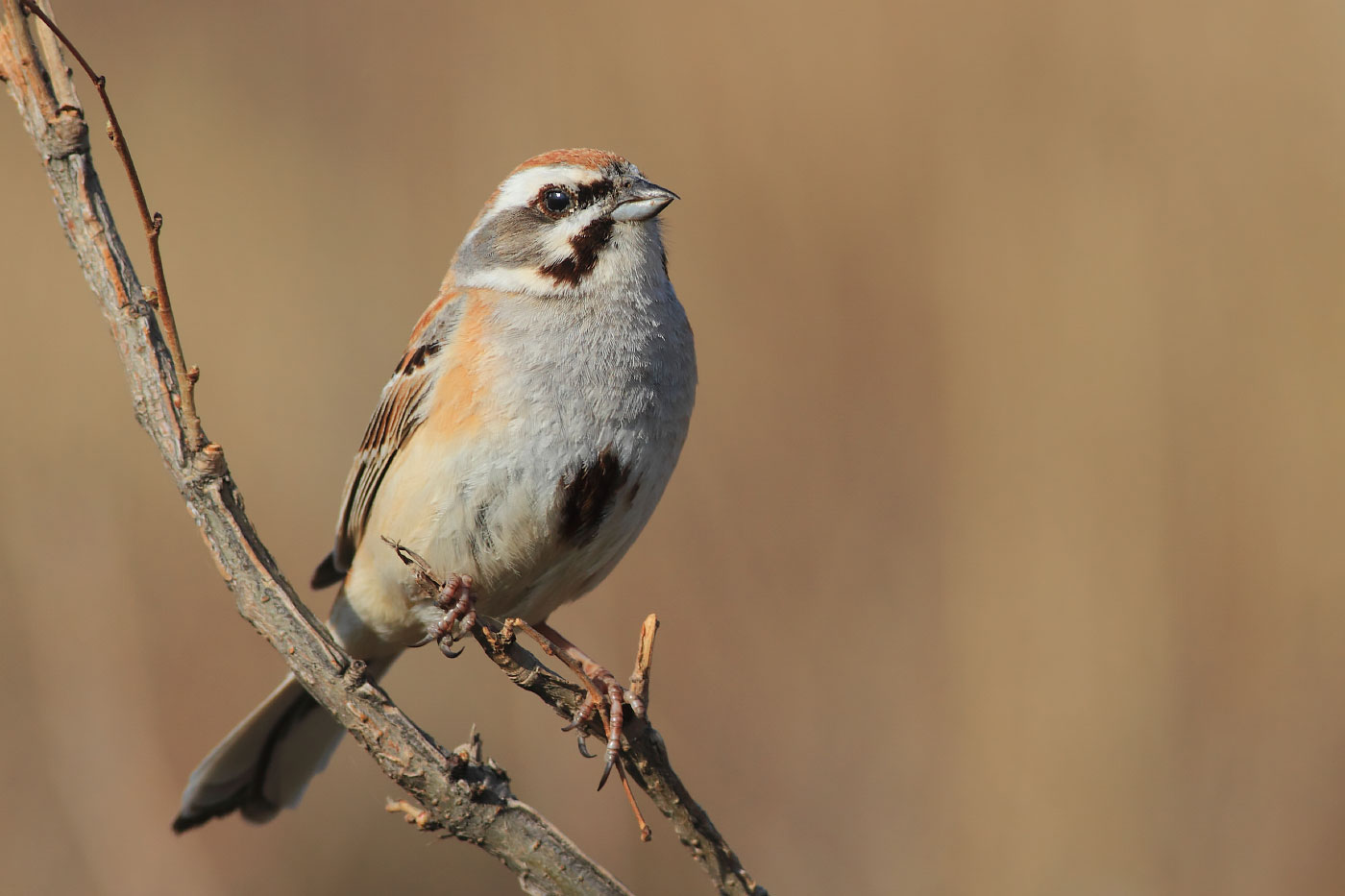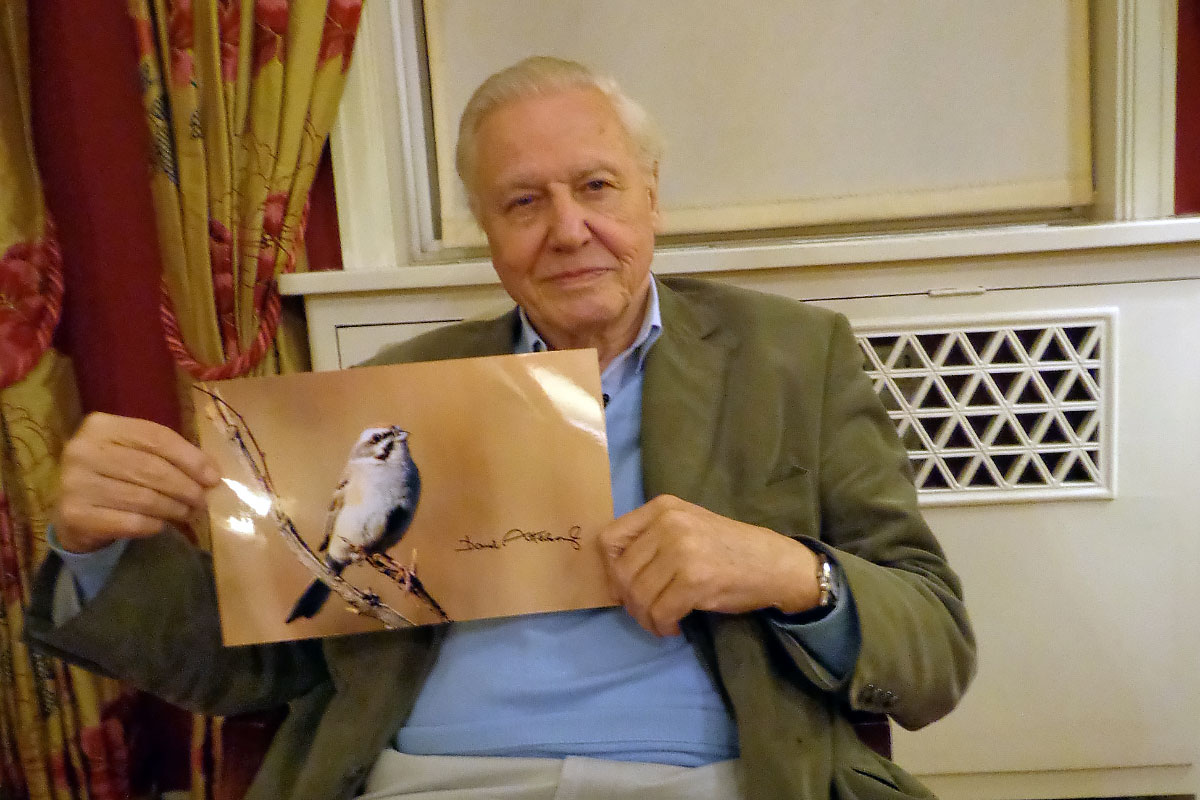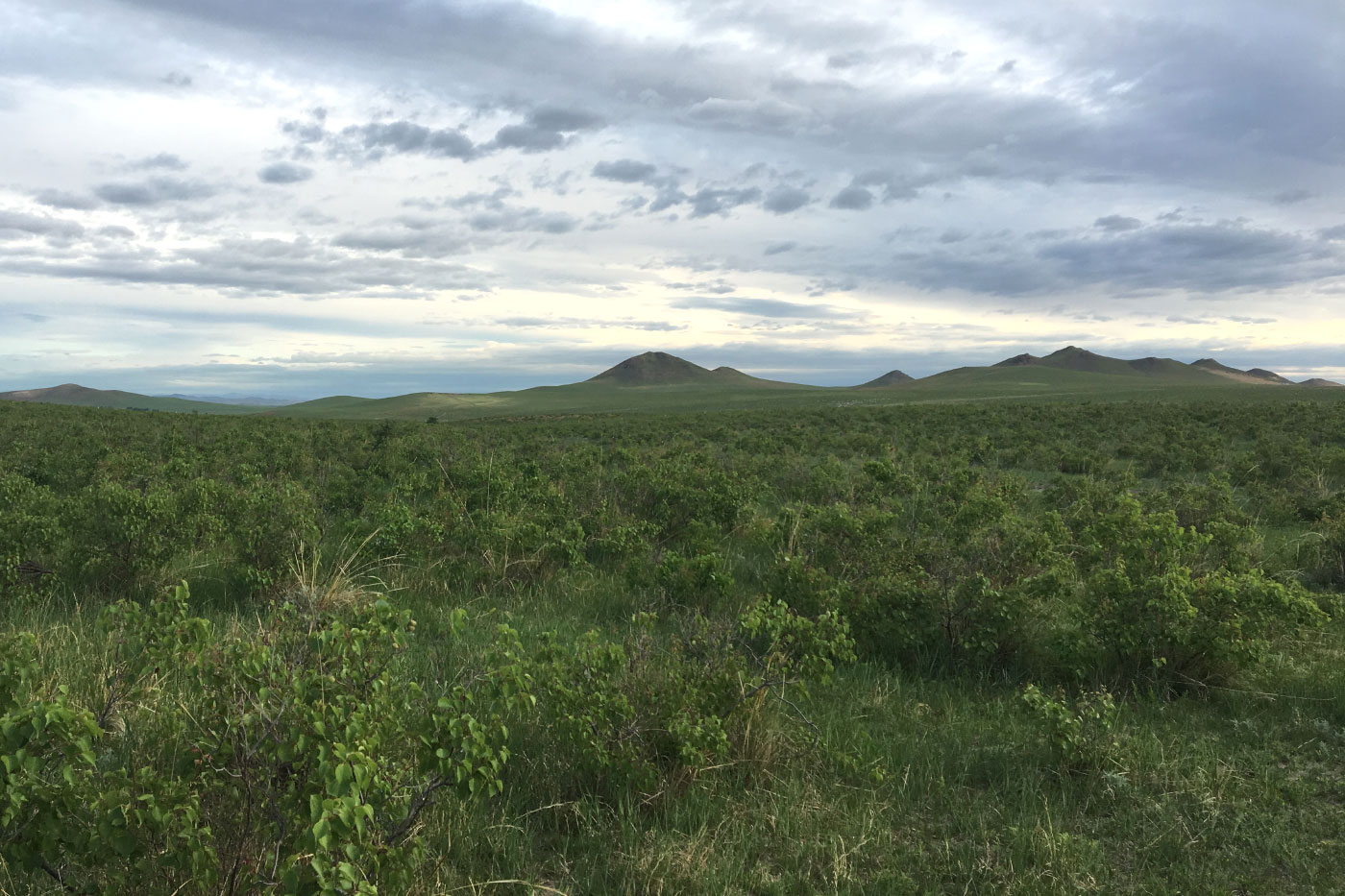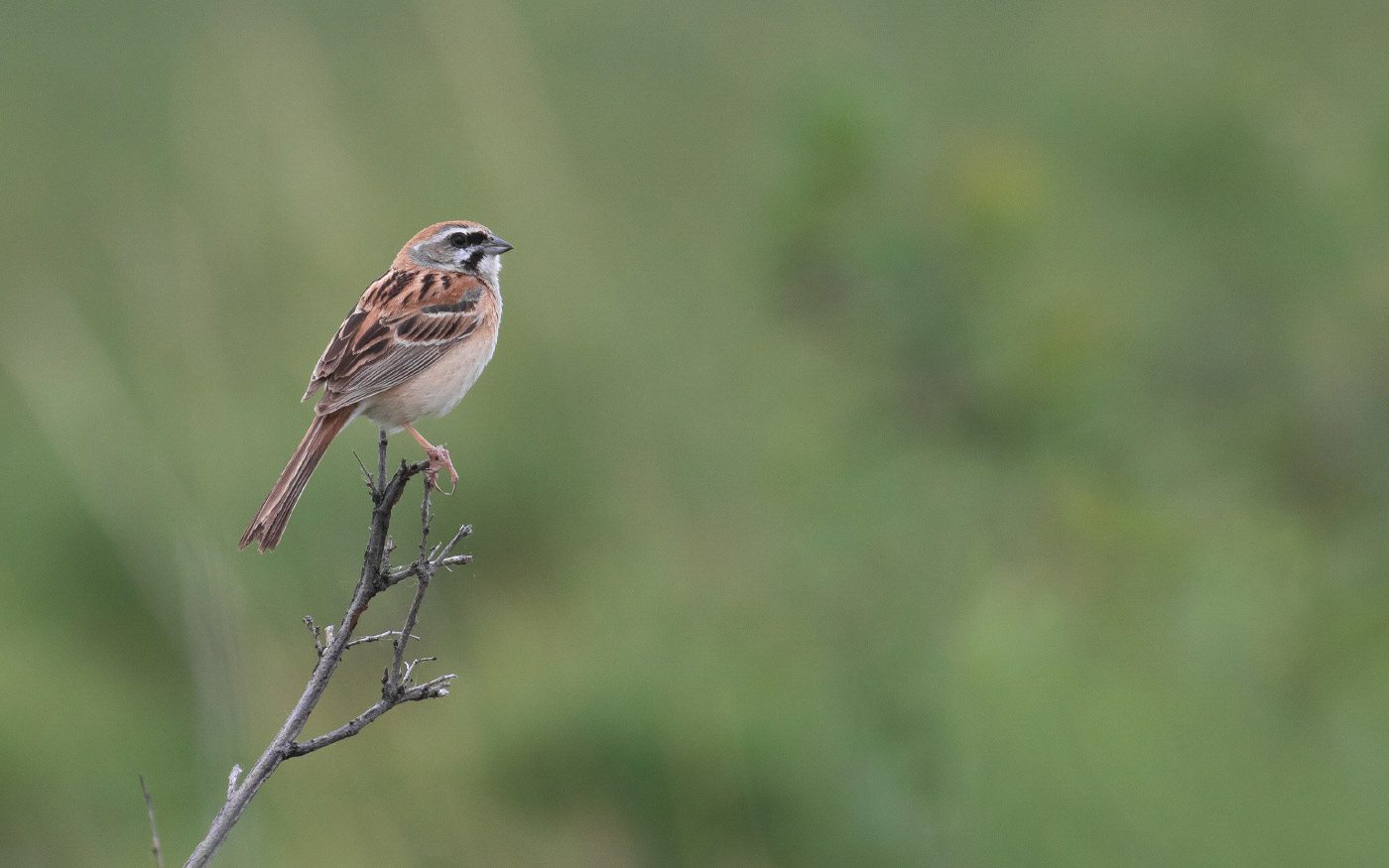China may be the most populated country on earth, but you would be forgiven for thinking otherwise on the rolling grasslands of Inner Mongolia, where vast skies and endless vistas dominate and the bustling mega-cities and relentless development seem a distant prospect.
Even here, however, the landscape-level impacts of man are apparent. Life takes on a traditional form away from the towns and cities, and villagers live off the land through various means. By far and away the most visible – and impactful – is livestock farming. There is evidence of it everywhere: huge herds of cattle, goats or sheep; sward chewed right down to the ground; droppings littered across the grasslands; forage harvesting for winter feed and so on.
Tougher, more adaptable species have learned to live and even thrive in such landscapes. Oriental Magpie is one of the commonest species encountered, particularly when close to human habitation. Though not as abundant, Daurian Jackdaw is also very prominent; Amur Falcon too seems to have made a good fist of co-habitation with man and can routinely be found around settlements.
But for more sensitive species, intensive pressure on the grasslands has had a devastating effect – none more so than for Jankowski's Bunting. Previously widespread across much of north-east China, including Inner Mongolia, Heilongjiang and Jilin, it has declined alarmingly and is now vastly depleted, remaining at only a handful of widely spread sites. It also used to occur in Far Eastern Russia, where it now appears extirpated, and a small population once existed in North Korea, but there is considerable uncertainty as to whether it is still there.
Jankowski's Bunting was named after Polish ornithologist Michal Jankowski, who collected the first type specimen of a male back in 1886. It is also given the less romantic name of Rufous-backed Bunting which, although not as endearing, is an accurate description of the large, unstreaked rufous rump and lower back that characterises the species.
It is a particularly attractive bird: small and long tailed, the brighter males are an artistic mix of bright rufous, bluish-grey and buff, with an unmistakable black-and-white head pattern and diagnostic black belly patch. It has a typical bunting song – simple, scratchy and jangly – and calls with a high-pitched tsik. Unlike other bunting species, which can be quite confiding, it is surprisingly shy and wary of man, often flushing at 50 m range if observers do not conceal themselves.

Jankowski's Bunting is a beautiful – yet unfortunately now very rare – bird of the rolling grasslands of Inner Mongolia (Zhu Lei).
Sad tale
The story of its decline is sadly an all-too-familiar one. Once a very common bird, the intensification of land use has caused a drastic retraction of its range into isolated pockets of remaining habitat. Jankowski's is very habitat specific in the summer months, requiring a mixture of grassland and low Siberian Apricot bushes, in which it nests. Formerly a widespread habitat, overgrazing and forage harvesting has greatly reduced its availability – and the bunting has resultantly disappeared from extensive swathes of land where it once existed.
This slide towards extinction became critical and drew international attention in the 2010s, thanks largely to the efforts of Terry Townshend of Birding Beijing. After a JustGiving campaign raised funds to cover two surveys on the breeding grounds, implemented via BirdLife International through the Hong Kong Birdwatching Society and in partnership with local volunteers, workshops were held with the local government in Inner Mongolia to raise awareness of the species' plight.

Sir David Attenborough leant his support to the campaign to save Jankowski's Bunting in 2013.
The government made commitments to promote the species and map areas of potential suitable habitat while, at the same time, funding was given to a team of local researchers at North-East Normal University in Changchun, Jilin Province, for more comprehensive surveys across north-east China. This work resulted in the discovery of a significant new site and a large upward revision of the population estimate to 9,800-12,500 individuals, as well as more awareness of the species among local communities and government. It also highlighted ongoing habitat loss and fragmentation as major threats to the remaining vulnerable population, and almost all of the sites discovered have no formal protection.
One silver lining, as I discovered during a trip to Inner Mongolia in June, is that Jankowski's Bunting can be very common, even abundant, in optimal habitat. I visited Ar Horqin Banner, a region some 125 miles west of the city of Tongliao – an area barely visited by 'foreign' birders, and was fortunate enough to observe perhaps 20 Jankowski's in a very small area of Siberian Apricot scrub – I estimated that there was a singing male every 100 m or so.
The problem was finding other remnant pockets of such terrain. Even on the outskirts of optimal tracts, there was evidence of grazing from transient livestock herds. The disturbing thing was that I was in what had been designated as a nature reserve, yet the vast majority of land was badly degraded and it felt like the bunting was clinging on here in its island oasis rather than flourishing, despite the high density. It seemed nature reserve status counted for little.

Jankowski's Bunting relies on Siberian Apricot scrub, but this has been extensively overgrazed or cleared across much of Inner Mongolia (Josh Jones).
Preservation game
Saving Jankowski's Bunting relies on the preservation of its remaining habitat. Harvesting and grazing leaves the roots of Siberian Apricot plants intact and, if fenced off and given the chance to recover, these would naturally regenerate, creating suitable areas for the bunting to occupy once more. The key to this is convincing locals that maintaining tracts of apricot scrub is important and that the bunting matters. To an Inner Mongolian herdsman, Jankowski's Bunting is an inconsequential feature of daily life, rather than a rare and enigmatic bird that is facing extinction.
The perilous situation in which Jankowski's Bunting finds itself boils in part down to China's insatiable appetite for meat. Demand continues to grow alongside increasing wealth and population. There is money to be made in raising livestock. Why would saving a small, sparrow-like bird supersede making a livelihood and supporting a family?
As a nation, an overall reduction in meat consumption is crucially important – not only to save the bunting's habitat but for a vast array of other reasons, not least to reduce the greenhouse gas emissions associated with livestock farming. As well as habitat loss, climate breakdown is generating increasingly regular droughts in north-east China, putting strain on the bunting and other grassland and wetland species.

The species is also known as Rufous-backed Bunting, and this image shows why: the basal colour of the male's upperparts, stretching from crown to uppertail, are a bright rufous-orange (Josh Jones).
Furthermore, large tracts of suitable bunting habitat could easily be preserved or managed through rotational or selective grazing and harvesting. This may involve the introduction of subsidies to local farmers, but it is vitally important if the bunting's future is to be safeguarded. Education on ecology and conservation would also play its party. Both of these require the willingness of local government to intervene and act.
The problems facing Jankowski's Bunting remain very real – and China needs to face up to this accordingly. What example would it set for the rest of the world if the nation hosting the UN Biodiversity Conference (October 2020 in Beijing) fails to address this very current problem and allows Jankowski's Bunting to slide further towards extinction in the decade to come?
- This article was originally published in the September 2019 issue of Birdwatch magazine. You can subscribe to the magazine here; BirdGuides Bird News Ultimate customers receive a free copy as part of their subscription package. To find out more about an Ultimate subscription, click here.


